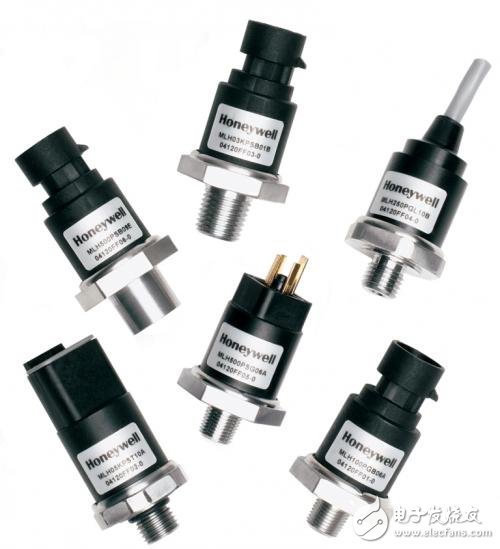Choosing the right pressure sensor for agricultural heavy equipment vehicles has a significant impact on the sensor itself and on the reliability and longevity of the equipment. In these applications, pressure sensors are commonly used to measure oil pressure, hydraulic oil fill pressure, and hydraulic system pressure to ensure safe and efficient operation of the vehicle. Each application has a range of different requirements for pressure sensors, including operating pressure, environmental conditions, and termination methods.
Below are three examples of using pressure sensors to measure hydraulic and pneumatic parameters in agricultural applications:
. Measure liquid pressure (such as liquid fertilizer spray) to ensure that the chemicals in the field are properly controlled.
. The hydraulic pressure used to lift and move the farming ploughs and utensils is measured. Includes equipment for plowing and seeding.
. Monitor and control the pressure on braking and equal security systems.
When selecting the right hydraulic and pneumatic pressure sensors for agricultural machinery applications, design engineers should pay attention to four main parameters: working pressure range, overload and burst pressure, environmental protection rating, pressure port and connector type.
In addition, the flexibility and configurability of pressure sensors are also important factors influencing design complexity and cost. Flexible and configurable sensors meet specific design requirements in different countries and can be used in multiple hydraulic heavy-duty agricultural applications. Designers should select a range of pressure sensor products that offer a wide range of options for multiple key parameters including work pressure, pressure port and connector type.
Working pressure range
The sensor pressure range is determined by the object being measured. In agricultural vehicle applications, pressure sensors measure the pressure of liquids such as liquid fertilizers or measure the hydraulic pressure used to “move plows and farming equipmentâ€.
In many cases, designers may want sensors to handle different pressure ranges to meet the needs of multiple applications. For the above example, if the sensor is used to measure fluid pressure such as when spraying liquid manure, the sensor should provide a 50 psi working pressure range. For measuring the hydraulic pressure of heavy-duty systems used to move ploughs and farming equipment in agricultural vehicles, the pressure range should be between 5,000 and 7,000 psi. When monitoring safety system pressures such as hydraulic brakes, a pressure range of 500 psi to 1000 psi is required.
Choosing a product line that meets all the application pressures of your application will make the designer's job easier – they only need to select a qualified product line and a technology for all pressure sensor needs.
Overload and burst pressure
Designers should also consider overload pressure and burst pressure requirements when selecting a pressure sensor. The overload pressure is the maximum pressure that the sensor can withstand without affecting the calibration. The burst pressure is the maximum pressure that the sensor can withstand without the seal being damaged or damaged. Both are important considerations for the designer. factor. Both pressure ratings are determined by the operating pressure of the sensor and are available in many data sheets. For example, Honeywell Sensing and Control's MLH pressure sensor (operating pressure 50 psi) provides 150 psi overload pressure and 500 psi burst pressure, respectively.
In the vast majority of cases, designers want to maximize overload pressure and burst pressure. Because overload pressure and burst pressure can be the biggest challenges in some hydraulic applications, this is especially true in applications that may experience high overpressures.
However, designers need to trade off between these pressure ratings and sensitivity. As the operating pressure of the sensor increases, both the overload pressure and the burst pressure increase, and the sensitivity decreases. So designers need to strike a balance between how much sensitivity to give up and how much overload and burst pressure to get. This also depends on the needs of the specific application.
Protection level
Pressure sensors used in agricultural equipment must be able to withstand very harsh environments. In many cases, heavy-duty agricultural equipment vehicles are susceptible to water, moisture, chemicals, and dust, affecting the performance of the pressure sensor. They must also withstand shock and vibration, rinsing, high temperatures and humidity. This means that pressure sensors used in these types of applications should provide an IP65 or higher degree of protection.
The pressure sensor should also provide a wide operating temperature range to handle hot or cold environments in the cockpit, near the engine or at the bottom. The MLH pressure sensor offers an operating temperature range from -40°C to +125°C.

Caption: Honeywell Sensing and Control's MLH pressure sensor combines application-specific integrated circuit (ASIC) technology with a dielectrically isolated metal diaphragm design that provides strong protection in heavy-duty vehicle applications.
Pressure port and connector options
After considering the pressure range and degree of protection, the designer also needs to consider how to connect the sensor to the system. In the European Union, pressure ports and connectors are very different in different countries, so sensors offer a wide range of options, which gives designers greater flexibility and configurability. This simplifies and speeds up the design process while helping to achieve a lower cost solution.
electric motorcycle charger
Electric Motorcycle Charger,Li-Ion Battery Charger For Motor,Motorcycle Li-Ion Battery Charger,Motorcycle Fast Battery Charger
HuiZhou Superpower Technology Co.,Ltd. , https://www.spchargers.com